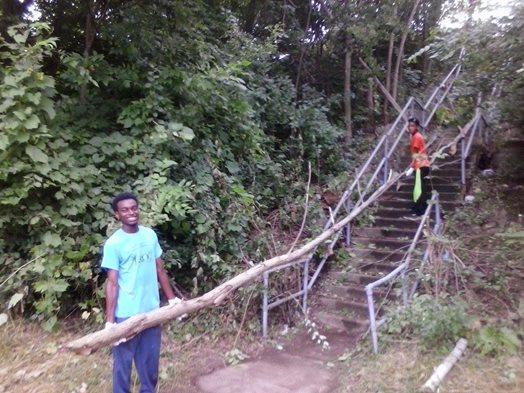To revitalize neighborhoods, creating a positive image must go beyond addressing blight and vacant properties. While our Neighborhood Marketing Program helps network organizations use creative marketing strategies to reinforce and promote local strengths, marketing strategies must be combined with improvements in the reality on the ground. Oftentimes, this must include tactics to address crime and public safety concerns.
The Stable Communities Initiative at NeighborWorks recently hosted two webinars on crime prevention through environmental design (CPTED) and strengthening of relationships between residents and police. Joined by Genesee County Habitat for Humanity (based in Flint, MI) and Nuestra Comunidad Development Corp. (Roxbury, MA), each session presented strategies to address both the perception and the reality of crime.
Based on lessons shared during the webinars, here are six tips to help make your community a safer place to live:
1. Implement “lighter, quicker, cheaper placemaking”
Crime prevention through environmental design (CPTED) is a collection of design principles that reinforce resident safety while discouraging destructive behaviors.For example, Genesee County Habitat for Humanity partnered with a group of youth to clean up a local park that has stairs providing pedestrian access to public-transit routes along a major commercial thoroughfare. For years, the area around the stairs had been overgrown, unsafe and poorly accessible, yet they still were used regularly by community members.
Using CPTED principles, youth removed a lot of the vegetation to improve visibility and increase the sense of security along the staircase. Implementing CPTED does not require elaborate or expensive interventions. Instead, something as simple as installing thorny bushes below ground-floor windows to deter break-ins can have a positive impact on the community.
 |
| Youth clean up a local park in Genesee County |
2. Use the SARA (scan, analyze, respond, assess) model for problem solving
Genesee County Habitat for Humanity and its partners also use the SARA model to thoughtfully address safety issues in a structured manner. This means:
- Scanning: identifying recurring problems of concern to the public and the police.
- Analysis: identifying and understanding the events and conditions that precede and accompany the problems.
- Response: brainstorming new interventions.
- Assessment: determining whether the plan was implemented correctly and is effective.
3. Engage residents
Faced with budget cuts, Flint has suffered a sharp decline in resources and staff available to address public safety concerns. As a result, residents have organized citizen patrols that monitor suspicious activities and propose solutions to problematic conditions. The result: Police can focus on more substantive crimes.In Roxbury, MA, the police department created a neighborhood-response team to get to know each of the families living in distressed neighborhoods. From karaoke to “flashlight walks,” officers act as allies in the community, building trust among residents.
4. Document your strategy and collect data on results
If your efforts are successful, present your findings to stakeholders interested in investing in the community. Use the data to leverage additional resources for additional events and activities. In 2012, Flint residents and area institutions organized the University Avenue Corridor Coalition to monitor crime and address blight. Using information collected through NeighborWorks’ Success Measures program, they have leveraged more than $1 million for economic development and community revitalization activities.
5. Increase social cohesion by encouraging residents to reclaim their space
Got an empty lot? Set up a monthly pop-up for community artisans. Interested in taking a stand against crime? Roxbury residents organized a National Night Out event. Want to make streets safer to travel at night? Coordinate with neighbors to increase street lighting by turning on porch lights. Every third Friday of the month, Flint residents gather in University Square Park for music, games, food trucks and other seasonal activities. These are just a few examples of how residents can play an active role in owning their environments.6. Leverage dollars and community assets
As with CPTED, even the smallest amount of money can make a big difference. Nuestra CDC sent a core group of residents and a police officer to the NeighborWorks America Community Leadership Institute. There they identified the need to conduct relationship-building activities between police and residents.
With a few hundred dollars matched by local partners, an old camper was purchased and converted into an ice cream truck. Police officers shared ice cream with children and met with parents to discuss how they can work together to address crime in the community.
How have you addressed safety in your community?

